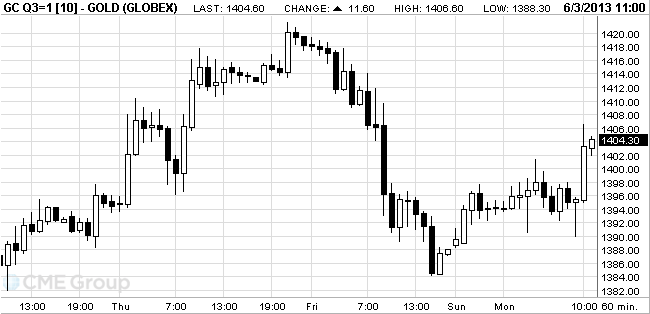- Gold is going up against falling dollar
Notícias do Mercado
Gold is going up against falling dollar
During the last hours of gold
showed growth due to a weaker dollar after weak data from the
Institute for Supply Management (ISM).
Manufacturing activity in the U.S. unexpectedly fell in May for the first time since November 2012. Reported Purchasing Managers Index (PMI) for the manufacturing sector in the U.S. in May fell to 49.0 against 50.7 in April. Values above 50 indicate an increase in activity in the sector.
Economists had expected the May PMI index was 50.6. The May index was the lowest since June 2009.
In May, gold fell more than 6 percent as investors feared that the Fed will cut the amount of buying up bonds. However, consumer spending in the U.S. fell in April for the first time in nearly a year, and inflation fell, prompting hope for preservation of the policy of "quantitative easing."
Demand for gold in India in the second half of the year will be as high as last year, as the forecast assumes a significant amount of monsoon rains that will bring good income to farmers - the main buyers of gold, said the head of the World Gold Council.
Stocks of the world's largest exchange-traded fund backed by gold (ETF) SPDR Gold Trust stopped falling after almost three weeks. Stocks rose on Wednesday and unchanged since then.
The cost of the August gold futures on COMEX today rose to 1408.70 dollars an ounce.
